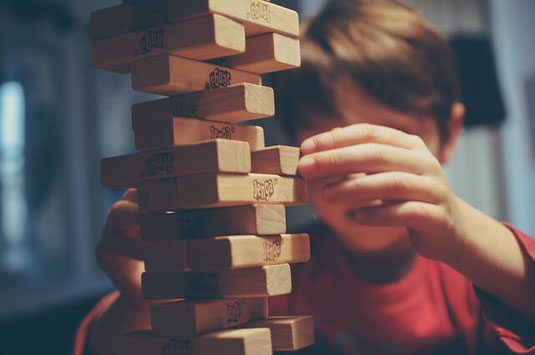CBT FOR CHILDREN AND TEENAGERS
CBT FOR CHILDREN AND ADOLESCENTS: WHAT DOES THE EVIDENCE SAY?
Cognitive behavioural therapy (CBT) has the largest evidence base of any psychological therapy and research confirms it is as effective for children and adolescents as it is for adults. Scientific studies show CBT to be a proven treatment for problems such as anxiety, depression, phobias, traumatic stress and low self-esteem.
CBT FOR YOUNG PEOPLE

The information provided in the ‘What makes CBT different?’ section also largely applies to CBT for children and teenagers.
- There is a strong focus on psycho-education and on the interplay between thoughts, feelings and behaviours.
- CBT helps kids and teenagers to help identify and challenge problematic thinking patterns. Cognitive skills are vital at navigating the difficulties life throws up at us, and CBT helps foster a more realistic, problem-solving outlook. This helps young people to effectively manage problematic situations rather than avoiding them.
- CBT is action-oriented, and helps to cement positive change through behavioural change.
CAUSES OF EARLY MENTAL HEALTH PROBLEMS

Many factors – genes, one’s upbringing, peer relationships, temperament, trauma, stress – can contribute to early mental health problems.
It is very common for children to feel anxious about school and friendships. This is even truer of the teenage years, which can be a time of enormous change, uncertainty and emotional turmoil.
WARNING SIGNS OF MENTAL HEALTH PROBLEMS

There are many warning signs regarding mental health problems in children and young people. Some of these include:
- Excessive worries or fears that get in the way of daily activities
- Experiencing long-lasting mood swings
- Having low or no energy
- Marked behavioural changes
- Engaging in self-harm, such as cutting or burning their skin
- Sudden physical changes, such as weight gain or loss
- Abusing alcohol or drugs
- Having thoughts of suicide
- Being unable to sleep or eat
- Feeling unable to enjoy pleasurable activities anymore
- Isolating themselves and avoiding social interactions.
HOW LIKELY ARE YOUNG PEOPLE TO SUFFER FROM MENTAL HEALTH PROBLEMS?

Mental health problems tend to start quite early in life. A 2013 report by the Royal College of Surgeons in Ireland (RCSI) found that by the age of 13 years, 1 in 3 young people in Ireland is likely to have experienced some type of mental disorder. By the age of 24, that rate will have increased to over 1 in 2.
A major US study of adult mental health disorders found that half of all lifetime cases start before the age of 14. The typical age of onset is especially early for anxiety disorders (11 years of age) and for impulse-control disorders (11 years). Of the anxiety disorders, children are most likely to suffer from specific phobias and separation anxiety disorder, where the median age of onset is just 7. Social anxiety disorder, too, tends to begin early in life, typically beginning around the age of 13.
Pre-adolescent depression is rare but it increases sharply from early adolescence, especially among girls.
ANXIETY, LOW SELF-ESTEEM, DEPRESSION: COMPONENTS TO CBT

- Different CBT protocols are used for different problems. For example, with anxiety (the most common mental health problem among children and teenagers), there tend to be four main components to CBT interventions – psychoeducation, cognitive change (changing thinking patterns), breathing and relaxation techniques to ease the physical symptoms of anxiety, and behavioural change. Excessive anxiety typically stems from an exaggerated sense of danger and a lack of belief in one’s coping abilities.
- Self-esteem issues are also a common problem that can be effectively tackled with CBT. Social exclusion, bullying and other invalidating experiences can badly damage self-worth and confidence. This can result in a vicious circle of negative self-talk and counter-productive or destructive behaviours. CBT helps to break this vicious circle. It helps young people to counteract their self-critical inner voice, providing them with positive coping mechanisms. Ultimately, this helps them to reclaim their self-confidence and self-worth.
- Like adult depression, teenage depression tends to be characterised by what CBT researchers call a negative cognitive triad – that is, negative views regarding oneself, one’s world and one’s future. These thinking patterns (‘there’s no point’) can result in young people abandoning personal goals as well as retreating from social activities and from enjoyable life experiences. CBT helps to challenge and ultimately change these negative thinking patterns. In therapy, we work together to assess what thoughts, events and situations are associated with positive and negative feelings, aiming to increase involvement in pleasant, rewarding activities that boost mood. If appropriate, therapy may involve working with parents to help ease family conflict. Sessions will also examine problem-solving interpersonal skills and ways to help relax and manage anxiety (anxiety and low self-esteem commonly co-exist with depression).
CBT AND THE THERAPEUTIC RELATIONSHIP

Cognitive behavioural therapy (CBT) relies on proven methods to address mental health problems, but any professional who works with young people knows that the most important element is the therapeutic relationship itself. As a former teacher, I have worked with children aged 5 to 12, secondary school students, and with adolescents who left mainstream education due to behavioural difficulties or mental health issues. In all cases, it always struck me how a warm, empathetic relationship that validated and motivated young people was a more important determinant of their academic success and wellbeing than any particular teaching technique.
Youth can be scary, a time of enormous change and uncertainty. However, it can also be a time of vitality and idealism and hope. Collaborative therapy can tap into these qualities by helping young people to feel better about themselves, to help them see their signature strengths as well as their psychological vulnerabilities, fostering resilience and helping them to thrive.